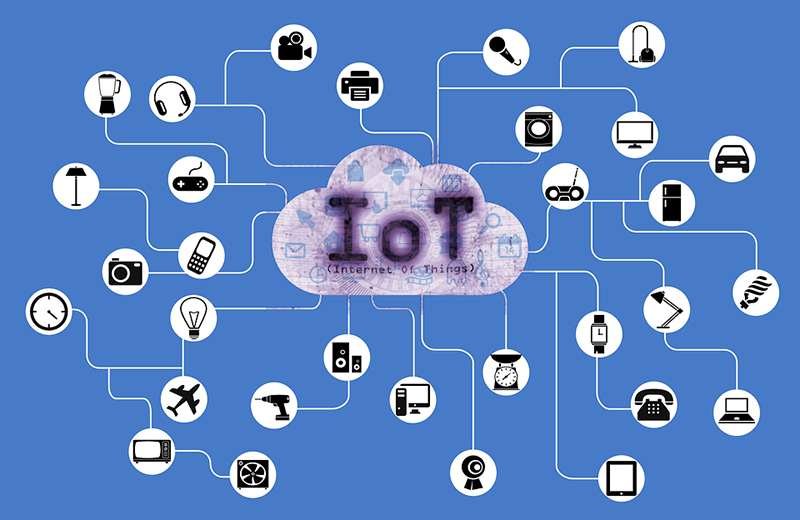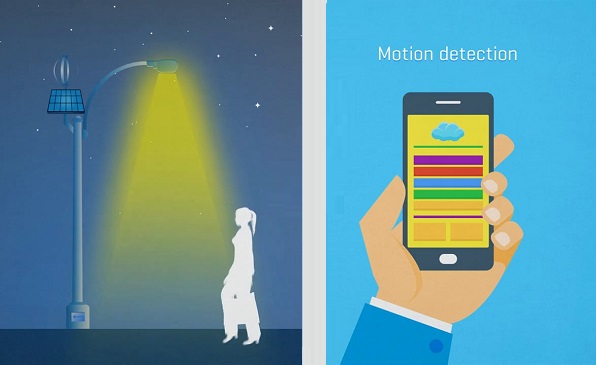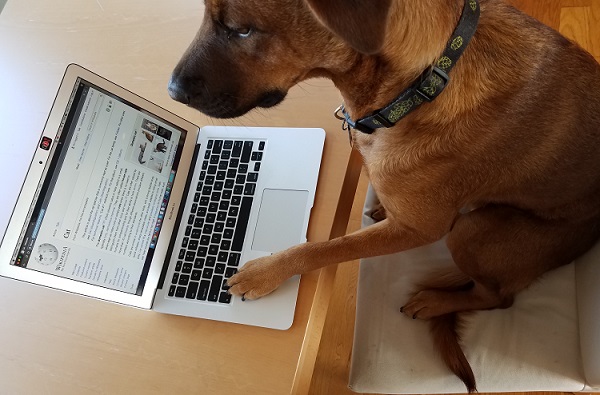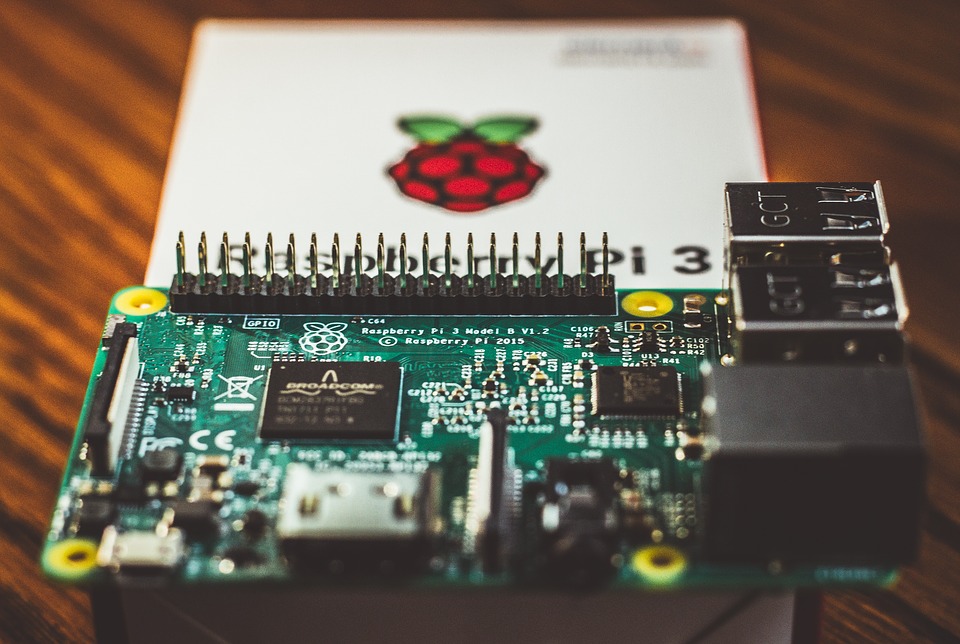
What is IoT? Applications and implementation of Internet of Things
The word “IoT” has recently become popular. IoT stands for “Internet of Things”. IoT: Internet of Things means that things communicate by the Internet.
Before the word IoT: Internet of Things, we were only using the Internet to connect computers. Therefore, when we thought about connected devices, we were biased to IT related devices such as PCs and server. Then came smartphones and smartwatches. Now we are connecting digital appliances such as TVs, digital cameras, digital recorders and even smart speakers to the Internet. This trend is likely to continue as digitized video, music, voice, photos, text information, etc. are transmitted over the Internet.
The Internet, which is now spread around the world, is becoming an information transmission path for all things to communicate. Connecting things that were not connected to the Internet until now is called IoT: Internet of Things.
There is no clear definition of the Internet of Things. There are various applications we can classify under IoT. Let us have a look at some of them.
What can be achieved by IoT/Internet of things?
Various things, machines, human actions, and natural phenomena generate huge amounts of information. Collecting and visualizing this information can solve various problems. Of course, it is not limited to quantifiable information. It also includes information that cannot be quantified by the sensor but can still be collected.
The word “Things” not only refers to physical things but also natural phenomena and biological behavior.
| Manipulate things with IoT. | Know the state of things with IoT. | Dialogue between things with IoT. |
| You can set up a remote control to operate remote objects with IoT. | By attaching sensors to things, you can collect data and remotely monitor the status of distant objects with IoT. | It is possible to transmit and receive arbitrary data between things separated by IoT. |
IoT involves sensors attached to things which can transmit data by the Internet without human intervention. Of course, this is in addition to the data conventionally input by humans using personal computers, etc.
With the Internet of Things, things with sensors can communicate to the Internet. So doors can tell you when they are open, or machines a factory can broadcast their performance. Potters can tell you when the plants want water. Even the cat’s collar can text you, “I’m in the bathroom now”! We can utilize this information in various places by Internet connectivity.
For example, by knowing the state of the door(open/close), you can avoid break-ins or respond promptly to trouble. It is also convenient for watching over the house and receiving messages from the machine.
M2M communication
The word ‘M2M’ is a short form for Machine to Machine Communication. M2M and IoT refer to the same thing. Machine to Machine means communication between devices. M2M is a system where devices communicate and operate without human intervention. The number of cases where things are connected to the Internet is increasing. Furthermore, we can expect the market is to expand even more.
We now call M2M as the Internet of Things (IoT). Now, we are trying to realize a safe and comfortable life by attaching various sensors to things and monitoring their status by the internet and controlling them.
We can also solve various measurement problems through IoT. In the implementation, this can involve exchanging measurement data, sensor data, and control data.
Examples of knowing about the state of distant things in the Internet of Things (IoT)
IoT: The Internet of Things allows you to receive sensor information through the Internet and learn about the state and location of various things.
Learn about the environment (Environmental monitoring)
We can use current technologies to know about the environment. For example, we can record and monitor details such as temperature, humidity, barometric pressure, illuminance, noise, etc.

It has its use anywhere we want to know the environment, whether it is indoors or outdoors. Examples include houses, offices, factories, construction sites, and farms.
Know the movement of things (Motion monitoring)
We can also record and make use of the information related to the movement of things. This can include movements like shock, vibration, tilting, falling, falling, moving, etc.

By knowing the movement of things, we can understand the state of things. Then we can use the information to take action when an abnormality occurs. For example, there are operation status monitors and predictive maintenance of production facilities in factories.
Know the location of things (Presence detection, proximity detection, passage detection)
We can locate things by using technologies such as presence detection, proximity detection, passage detection.
For example, to estimate the rough distance between the object and receiver, we can measure the radio wave intensity. We can then apply it to know the position of an object.
Know the opening and closing of things (Door, window, cupboard, drawer, etc.)
We can also know the opening and closing state of things in the Internet of Things.
As an example, we can check if the door is locked properly when we leave the house. Also, businesses can use it to monitor the behavior of people by checking how many times they interacted with the door.
In addition, you can know the operation status of the factory equipment.
Get to know your pet’s behavior at home

Another usage can be monitoring or checking on your pet using things such as proximity or movement sensors. For example, a system can connect the behavior and movement of your cat or dog to other places around the house. In this way, you can see how your pet is faring when you are away from home.
Know the state of houseplants
We can also make taking care of house plants easier with an IoT approach. Consider these applications:
- Attaching a sensor to the soil to monitor the amount and composition of water.
- Examining the moisture content of the soil so you know the timing of watering.
- Turning on the illuminance sensor to monitor the impact of light.
Example of manipulating distant objects with the Internet of things (IoT)
Some applications of this are already common. Such as: turning off the air conditioner, or controling the lighting.
Other than these, we can also connect healthcare devices and other home appliances to the Internet. In this way, we can monitor the status of devices other than home appliances. These can include devices such as water heaters and bath pots, remote control, etc. In addition, we can also obtain information on various sensors installed anywhere in a factory, in a building, at a store, in the hospital, in the school or outdoors.
Internet of Things applied to various locations
IoT is not just a technology which we can use in a special place or limited settings. It can have a wide range of applications. In fact, we can use it whenever there are things that we want to know the state in a distant place. Other examples can include situations when there are things that we want to change the state of in a distant place. In this way, we can apply IoT even to places themselves.

Here are some examples of usage.
Understand the status of devices in the factory with IoT
- Check normal operations
- Detect abnormal movements
- Know the signs of anomalies
- Find out the number of spare parts
Process control in the factory with IoT
- Monitor progress
- Detect anomalies
- Conduct preventive maintenance
Monitor the interior of a greenhouse with IoT
- Check the temperature
- Get an idea humidity
- Know the soil moisture
- Check the levels of illumination
Caring for and watching over employees with IoT
- Confirm check in and check out by IoT
- Monitor the opening and closing of the doors
- Know the indoor temperature and humidity
Connecting Things and the Internet
We have two ways to connect things and the Internet: Wired and wireless. There are many cases where a wireless connection is convenient, or it is difficult to achieve without wireless. The wireless connection between things broadens the scope of applications of IoT.
Various communication methods used in IoT
There are various methods of wireless. We are already connecting various devices to the Internet by wireless methods. These methods now include WiFi (wireless LAN), 3G, LTE, 5G, etc.
There are various communication methods for connecting to the Internet. Examples include wired or wireless, free or paid, fast or slow, large or small. They can also differ in power consumption, necessity of access points, etc.
Computers need to handle large volumes of data such as video and audio. Therefore, data transmission requires a high-speed communication network (broadband). We already have established wireless communication infrastructures such as 3G, 4G LTE, 5G, etc. However, high-speed communication networks require a large amount of power. So using batteries may not be suitable for long term use.
On the other hand, IoT devices use comparatively small data in most cases. So low-speed (narrowband) communication can be sufficient for them. Furthermore, batteries are impractical as you need to replace them often. As a result, they will stop communication for some time. Especially when the battery needs a replacement. As a result, it is necessary for IoT to connect using low-power communication means.
Integration of means of communication in IoT
The Internet communicates according to a standard called IP (Internet Protocol). Communication uses a data format called an IP packet. We connect to the Internet by converting the data format used by various communication methods into IP packets. There are devices that convert communication methods or data formats. We call them gateways or access points. We can implement IoT by converting narrow band radio to broadband radio (WiFi or 3G / LTE / 5G). Another way can be to convert it to Ethernet and connect to the Internet.
After connecting to the internet, we can even communicate with remote mobile phones, PCs, etc. by broadband regardless of location.
IoT and Narrowband Radio
There is a large number of connected things. So we need a wireless technology that can handle the connection of many nodes in the same area. For effective communications, many developers choose “narrowband” radios to reduce chances of congestion.
Low-Power Wireless systems
In most cases, it is not easy to supply AC power to things. There are also things we cannot replace frequently. Therefore, in order to implement IoT, it is necessary to have wireless technology runs for a long time with low power consumption.
Wireless Tags/Wireless Sensors
In the Internet of Things, we connect the network to the Internet mainly by attaching wireless sensors. These can take the form of “wireless tags” using small coin-cell batteries. We can then know the state of things by the sensor mounted on the tag.
Ideal wireless tags are small in size, save energy, have long batteries, and require sufficient communication distance.
Accelerometer
We can use wireless accelerometers to record the movement of things. They can transmit the state and movement of the thing we attach them to.
Antennas for Internet of Things
Weoften forget about antennas. However, they are very important for wireless communication. The position and orientation of the antennas greatly affects communication.
Normal antennas have poor sensitivity if they are not aligned with each other. This is because the direction (polarization) of the wave of the radio wave is different. However, in applications for the IoT, it is difficult to align the antenna orientation depending on the installation conditions of the sensor. Also, in the case of a wireless terminal moving like a wearable terminal, the antenna orientation is undefined. There are several products under development to resolve this challenge.
Wireless communication standard for Internet of Things
There are various standards that we can use for IoT such as IEEE802.15.4. IEEE has formulated standards such as low power consumption by using short-range narrowband communication. We can supplement it with conventional wireless methods (such as WiFi or Bluetooth).
Moving on, we can also implement long-distance communication with Long-distance narrow band LPWA (Low Power, Wide Area) by lowering the communication speed to the limit. Also, there are many communication standards such as NB-IoT, LoRaWAN, SIGFOX, etc.
Summary
Internet of Things communicates over the Internet network by linking many other communication methods.
In some cases, we can use gateways to wirelessly connect various sensors and devices. After connecting the device to the Internet, we can monitor and control it from our smartphones, laptops, etc.
There are several applications of IoT, which we can broadly classify into knowing and operating distant things. It has applications in our daily lives as well as a wide range of industries. Looking at the trend of technology, IoT will become an important part of our daily lives.
